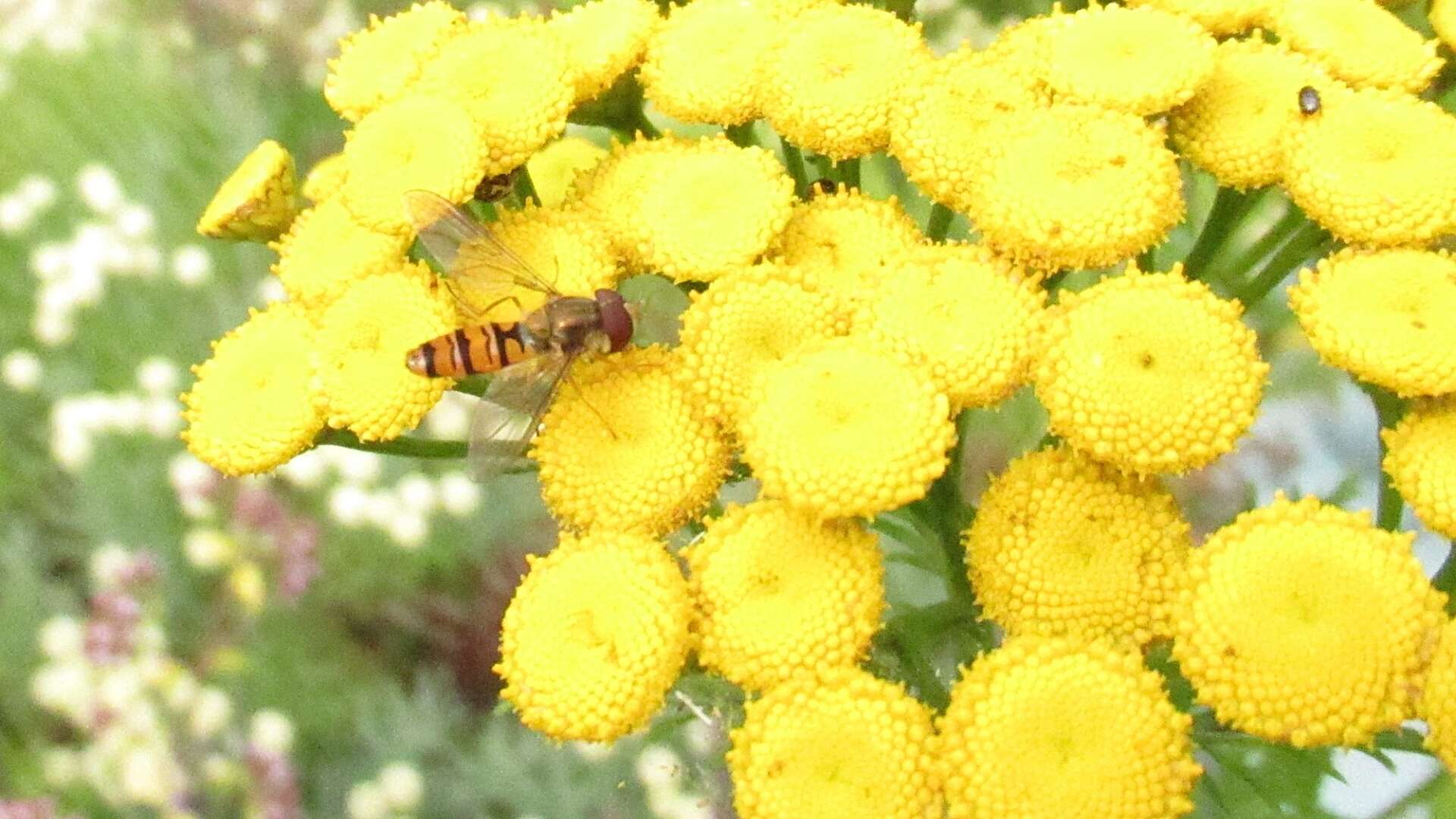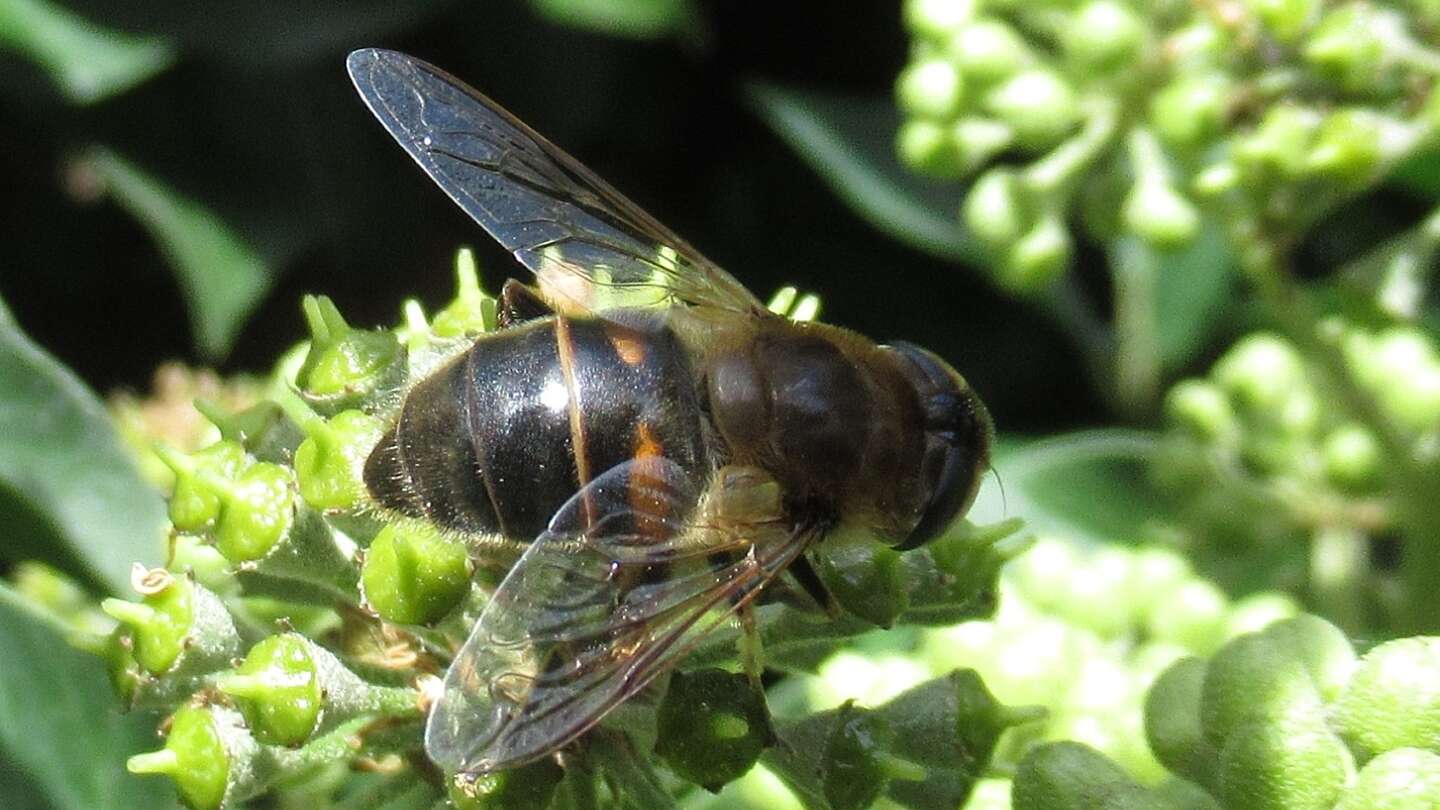Insects to spot this summer

Your garden will be buzzing with activity this summer - in the air, and on the petal or leaf. One of our commonest insects will undoubtedly be the marmalade hoverfly (Episyrphus balteatus), which occasionally migrates in huge swarms from the Continent. It also hibernates overwinter as an adult and can be seen on sunny winter days.
During June it can be found in almost every garden, with the adults preferring to visit flat-topped flowers such as tansy, dill and calendula or single roses. Hoverfly larvae vary in shape and size according to species, but the example pictured shown is typical of the Syrphid group. It will eat between 500-800 aphids between hatching and adulthood, when its mature insect diet becomes restricted to pollen and nectar.

Adults show off their characteristic, thin Mexican-bandit stripe underneath the thicker, dark bands on the abdomen. This makes them very easy to identify, although the shade of orange banding varies. Some individuals show some white stripes, others are quite dark. Possibly extra thick and rich dark marmalades respectively!
Look out for tree bees
Other insects common in June include the tree bumblebee (Bombus hypnorum). They are small bees with a ginger top, black body and white bottom. Initially, the first worker bees from a new nest will be quite small but tend to increase in size as the summer goes on and better food supplies appear. Tree bees came to the UK under their own steam around 2001 and have been moving steadily north ever since.

They tend to catch people's attention when the males emerge…but aren't allowed back in the nest. I often imagine the conversation to be: “if you think you're coming in here stinking of nectar you've got another thought coming, you horrible drone!" They congregate outside in a wildly buzzing groups, hovering near the nest entrance (technically called a 'lek') waiting for females to make an appearance. This may last a couple of weeks.
The males don't sting but dislike loud noises and if sufficiently alarmed by music, hammering or power tools, they will rouse the worker bees, which can sting if provoked further. So be aware of nests and treat them with respect.
After the males start to lek, a colony's days are numbered, and it will only remain active for around six weeks. Tree bees usually have two broods a year, but the summer queens will use a new nest for the second brood.

Dance of the damsels
You may spot a Banded Damselfly, or Banded Demoiselle (Calopteryx spendens) over a large garden pond or stream. They’re most often seen near slow-moving water such as canals or sluggish streams with muddy bottoms and are said to be a sign of clean water.
They can often be seen in large numbers, with the male’s metallic blue with big dark blue blotches midwing, and females with emerald-green bodies and smokey, pale-green wings. Males dance over the water in swarms hoping to attract a female's attention, often patrolling a territory vigorously against other insects.
A damselfly will prey on any insect smaller than it is, and enjoy feeding on aphids, midges or even flying ants. In very hot weather female damselflies, like other insects, are attracted to unusual foodstuffs varying from cat food and urine to human sweat, for the mineral content it contains!
One of the first damselfly species to be seen, like swifts they are the true heralds of summer for me.
Show some love for mullein moth caterpillars
These spectacular caterpillars are gloriously coloured in grey, chrome yellow, black and white and feed in plain sight - happy to let every predator know that they taste foul. They appear in large numbers in late June and can reach as large as a little finger in a matter of 10 days from the egg.
Fortunately, despite reducing mullein plants to doilies overnight, they have a single generation and don’t do the plants any permanent damage, just slowing the flowering time down by a few weeks. In many parts of the UK, they are declining, so please don't squish!
The adult moth doesn’t live up to its larval stage, and becomes a rather boring brown-grey moth, which is beautifully camouflaged as a dead twig or rolled up leaf. Find out more details.

Can you hear the drone?
The drone fly can be found at almost any time of year, but during the summer it's present in large numbers and can be found buzzing about on sunny days in gardens, parks, hedgerows and woodlands. The hum of established woodland in summer is partly down to the noise made by hundreds of these insects' wings!
Drone flies are also common in gardens, especially if you have a comfrey-and-water tub or a drowning bin for perennial weeds. The rat-tailed, maggot-like larvae live in organic-rich liquids, such as slurry or wet hollows in tree-trunks. As the larvae mature, they crawl to the outside of the liquid to pupate, and their dry brown pupa are important food for insect loving birds such as great tits.
They are important pollinators, using their resemblance to a bumble bee as protection. Insects are quite variable in colour, with those that emerge in summer usually being brighter than autumn hatched ones.
